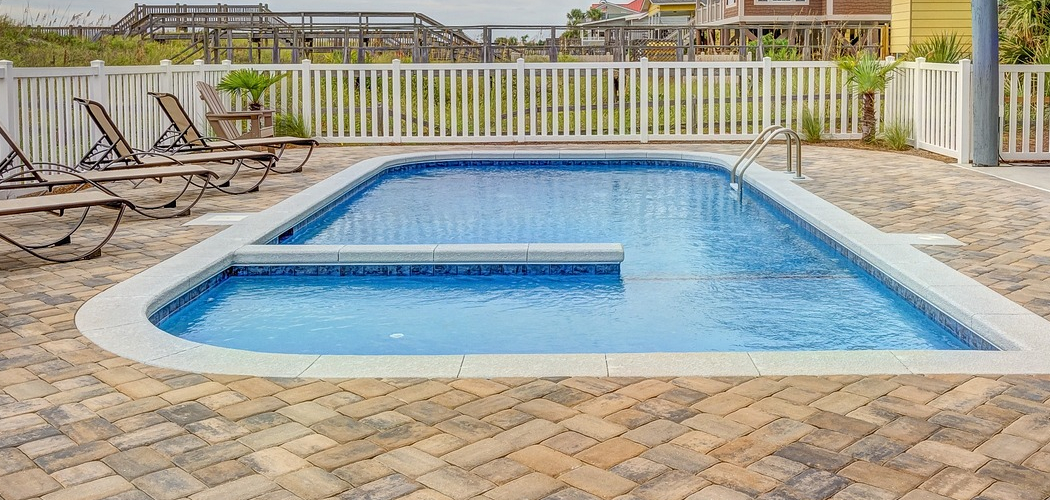Do you have a pool that looks tired and grimy? Are your pool tiles covered in calcium buildup and grime? Do you want to restore its good-as-new glimmer so that it can be the beautiful centerpiece of summertime fun that it was always meant to be? You’re in luck! Removing calcium from pool tiles is surprisingly easy but also requires patience.

In this blog post, we’ll tell you all about how to remove calcium from pool tiles. We’ll show you some household items and special cleaning solutions which will give your swimming pool tiles back their original sparkle. Get ready to find out how simple removing calcium from pool tiles really is – read on!
Will Vinegar Remove Calcium from Pool Tiles?
The short answer is yes, vinegar can be used to remove calcium from pool tiles. Vinegar is known for its antiseptic and acidic properties and it’s a great way to clean your tile surfaces. When mixed with water, vinegar can dissolve calcium deposits quickly and efficiently.
To use this method, mix one part white vinegar with four parts water and apply it to the affected area using a sponge or cloth. Let it sit for 15-20 minutes before rinsing with clean water. If needed, repeat this process until all of the calcium deposits are removed from your pool tiles.
It’s important to note that this method should only be used on ceramic or porcelain tiles, as the acidity of the vinegar can cause damage to other surfaces. Additionally, make sure to use a safe mixture and take caution when using it on your tile surfaces so you don’t end up damaging them in the process.
If the vinegar mixture isn’t enough to remove all of the calcium deposits, you can also try using a pumice stone to scrub away the remaining build-up. Just make sure to use a gentle hand and be careful not to damage the tile’s surface in the process.
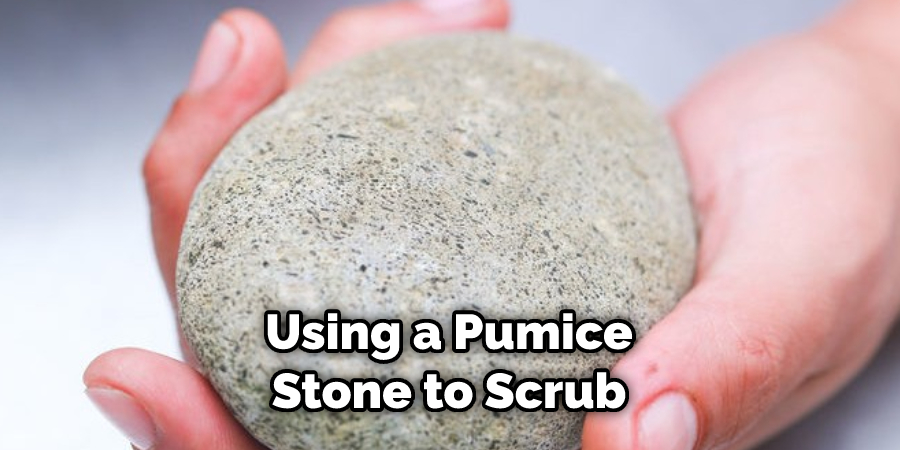
11 Methods How to Remove Calcium from Pool Tiles
1. Vinegar Solution:
Vinegar is a versatile household ingredient known for its cleaning properties. To create a vinegar solution, mix equal parts of white vinegar and water in a spray bottle. Spray the solution onto the affected areas and let it sit for about 15 minutes. Scrub the tiles gently using a soft brush or sponge, and then rinse thoroughly with clean water.
However, be aware that this method may not work for heavily calcified tiles. Although vinegar is generally safe, it is acidic and can potentially damage certain types of pool tiles. Make sure to test the solution on a small section of tile before applying it to the entire pool.
2. Lemon Juice:
Similar to vinegar, lemon juice contains citric acid, which can help dissolve calcium deposits. Squeeze fresh lemon juice onto the affected tiles and let it soak for approximately 10 minutes. Gently scrub the tiles using a non-abrasive brush or sponge, and rinse thoroughly to remove any residue.
Once the calcium deposits have been removed, be sure to rinse again with plain water. The acidity of lemon juice may cause discoloration on some tile surfaces, so it’s important to test a small area first. If discoloration does occur, simply rinse the area with clean water until the desired results are achieved.
3. Baking Soda Paste:
Baking soda is a mild abrasive that can effectively remove calcium deposits without damaging the pool tiles. Create a paste by mixing baking soda with water until it reaches a toothpaste-like consistency. Apply the paste to the affected areas and allow it to sit for 10-15 minutes. Scrub the tiles gently with a soft brush or sponge, and rinse thoroughly.
Repeat as necessary until the calcium deposits are removed. Be sure to rinse and dry the tiles after each application of baking soda paste. Try to avoid getting the paste on other surfaces, as it may be difficult to remove. If you do get baking soda paste on adjoining tiles or surfaces, rinse
4. Commercial Calcium Removers:
There are various commercial calcium removers available in the market specifically designed to tackle stubborn calcium deposits on pool tiles. Follow the manufacturer’s instructions and apply the product to the affected areas.
Allow it to work for the recommended time, then scrub and rinse the tiles thoroughly. Repeat as needed until all calcium deposits are gone. Be sure to wear protective gloves and eyewear while using these products.
5. CLR (Calcium, Lime, and Rust Remover):
CLR is a popular household cleaner that can effectively eliminate calcium deposits. Dilute CLR with water according to the instructions provided on the label. Apply the solution to the affected tiles, let it sit for the recommended time, and scrub gently.
Rinse the tiles thoroughly afterward to remove any residual cleaner. Be sure to wear protective gloves and eye protection when using CLR, as it may cause irritation if used improperly. Keep in mind that CLR may discolor certain pool tiles, so always test it on a small area first before applying to the entire surface.
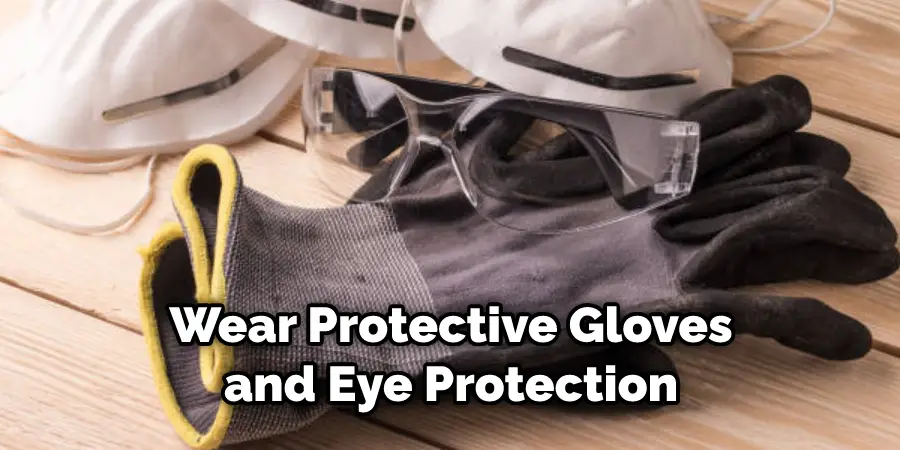
6. Muriatic Acid:
Muriatic acid, also known as hydrochloric acid, is a strong chemical that should be handled with extreme caution. Dilute muriatic acid with water in a 1:10 ratio (one part acid to ten parts water). Apply the diluted solution to the affected tiles using a brush or sponge. Be sure to wear protective gloves, goggles, and clothing when working with muriatic acid.
After scrubbing the tiles, rinse them thoroughly to neutralize the acid. Repeat this process until the calcium deposits have been removed. Make sure to dispose of any remaining muriatic acid properly so it does not contaminate the environment.
7. Pressure Washing:
Using a pressure washer can be an effective method for removing calcium deposits from pool tiles. Adjust the pressure washer to a low setting to avoid damaging the tiles. Hold the nozzle a few inches away from the surface and spray in a sweeping motion to remove the deposits. Be cautious not to focus the spray on one area for too long, as it may cause damage.
Use a brush to scrub any stubborn deposits, and rinse with clean water. For minor calcium build-up, you may be able to use the pressure washer without a brush. Always wear safety goggles and gloves during this process to protect yourself from debris or splashing.
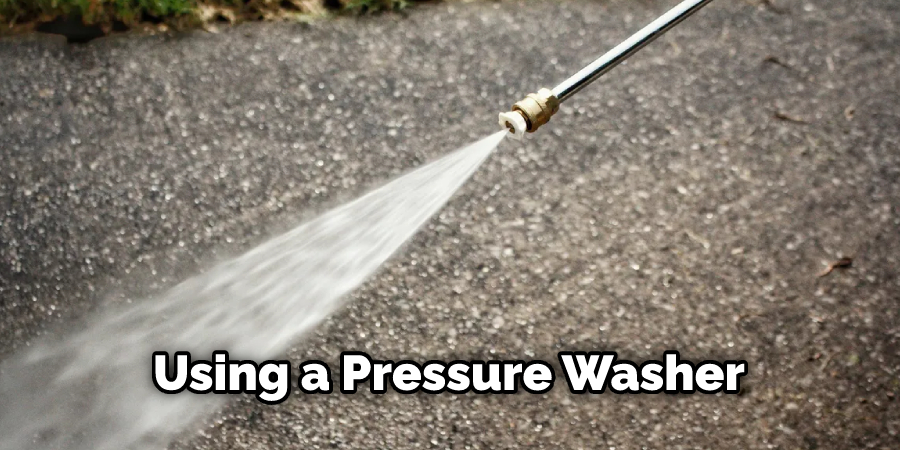
8. Pumice Stone:
A pumice stone can be used to manually remove stubborn calcium deposits. Wet the pumice stone and gently rub it over the affected areas. The pumice stone acts as a mild abrasive and helps to lift off the calcium deposits. Ensure that the stone and the tiles are wet at all times to prevent scratching. When the calcium deposits have been removed, rinse with fresh water and dry with a soft cloth.
Make sure to clean the pumice stone after use. Repeat as necessary. To avoid further calcium buildup, regularly shock the pool with a chlorine or other chemical solution. Additionally, make sure to regularly brush and vacuum the tiles to keep them clean. Finally, use a professional pool service at least once a year to keep the water balanced and the tiles free from calcium deposits.
9. Enzyme Cleaners:
Enzyme cleaners are specifically designed to break down organic matter, including calcium deposits. Follow the instructions on the product and apply it to the affected tiles. Allow it to sit for the recommended time and then scrub the tiles gently. Rinse thoroughly to remove any residue. Repeat as necessary until all calcium deposits are removed. Though it is a slower process than other methods, it is also gentler on the tiles.
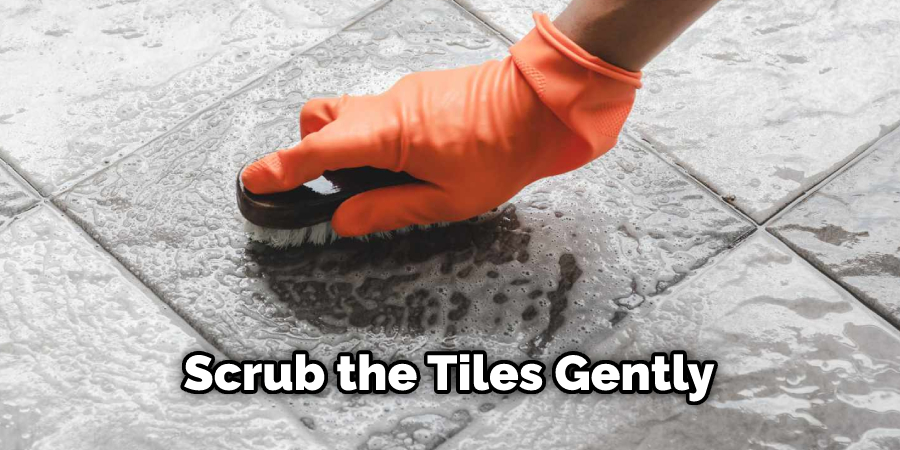
Be sure to store enzyme cleaners away from children and pets. Clean up any spills immediately. Make sure to wear protective gloves and eye protection when handling the enzyme cleaner. The cleaner should not be mixed with any other chemicals, as this can produce hazardous fumes. With proper safety precautions, enzyme cleaners can be a great option for cleaning calcium from pool tiles.
10. Mechanical Polishing:
For more severe cases of calcium buildup, mechanical polishing can be an effective solution. This method involves using a rotary tool equipped with a polishing attachment or a buffing pad. Apply a polishing compound to the affected areas and gently work the tool over the tiles, applying moderate pressure. The polishing action will help remove the calcium deposits and restore the shine to the tiles.

After polishing, rinse the tiles thoroughly to remove any residue. Regular maintenance can help prevent calcium buildup in the future. Proper cleaning and treatment of pool tiles with a metal-reducing agent such as phosphoric acid can help ensure that calcium deposits will not form. Additionally, proper circulation and filtration of the pool water can help reduce calcium buildup.
11. Hot Tub and Tile Cleaner:
Hot tub and tile cleaners are specifically formulated to remove mineral deposits, including calcium, from pool tiles. These cleaners often contain a mix of acids and detergents. Follow the instructions provided on the product and apply it to the affected tiles. Allow it to sit for the recommended time, then scrub the tiles gently using a brush or sponge. Rinse the tiles thoroughly with clean water.
Conclusion
In conclusion, pool maintenance can often be a challenge, but learning how to remove calcium from pool tiles is an essential task for any pool owner. Calcium build-up on tile surfaces can be addressed with chemical treatments and retail products that are designed to penetrate scale and plaque buildup.
It is also important to regularly clean the pool surface with specialized cleaning brushes, as this allows for more efficient removal of deposits. Poorly balanced water chemistry or improper maintenance due to aging pools can cause a higher calcium build-up rate and need more aggressive measures such as hydro-blasting or sandblasting.
About
Outdoor Fixes is a distinguished figure in the world of Diy design, with a decade of expertise creating innovative and sustainable Diy solutions.
His professional focus lies in merging traditional craftsmanship with modern manufacturing techniques,
fostering designs that are both practical and environmentally conscious. As the author of diy,
outdoorfixes delves into the art and science of outdoorfixes-making, inspiring artisans and industry professionals alike.
Education RMIT University
(Melbourne, Australia) Associate Degree in Design (Outdoor Fixes) Focus on sustainable design, industry-driven projects,
and practical craftsmanship. Gained hands-on experience with traditional and digital manufacturing tools, such as CAD and CNC software.
Nottingham Trent University
(United Kingdom) Bachelor’s in outdoorfixes.com and Product Design (Honors) Specialized in product design with a focus on blending creativity with production
techniques. Participated in industry projects, working with companies like John Lewis and Vitsoe to gain real-world insights.
Publications and Impact
In diy, Outdoor Fixes his insights on indoor design processes, materials, and strategies for efficient production.
His writing bridges the gap between artisan knowledge and modern industry needs, making it a must-read for both budding designers and seasoned professionals.

